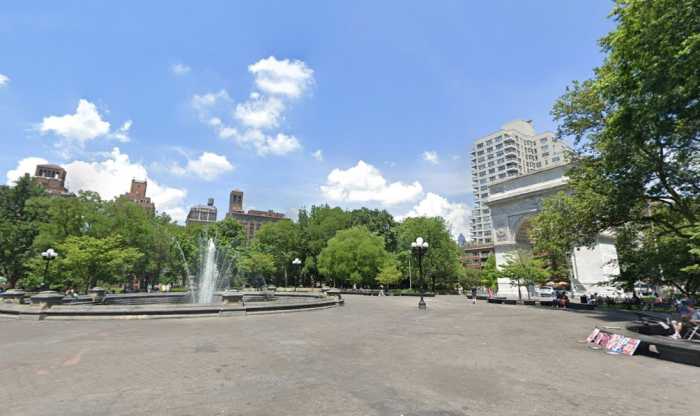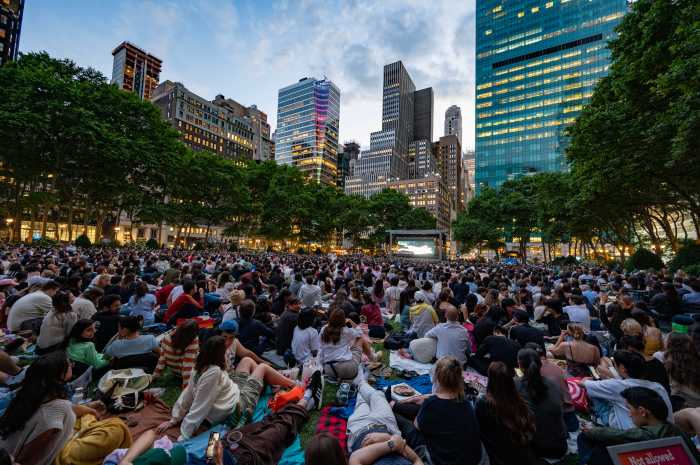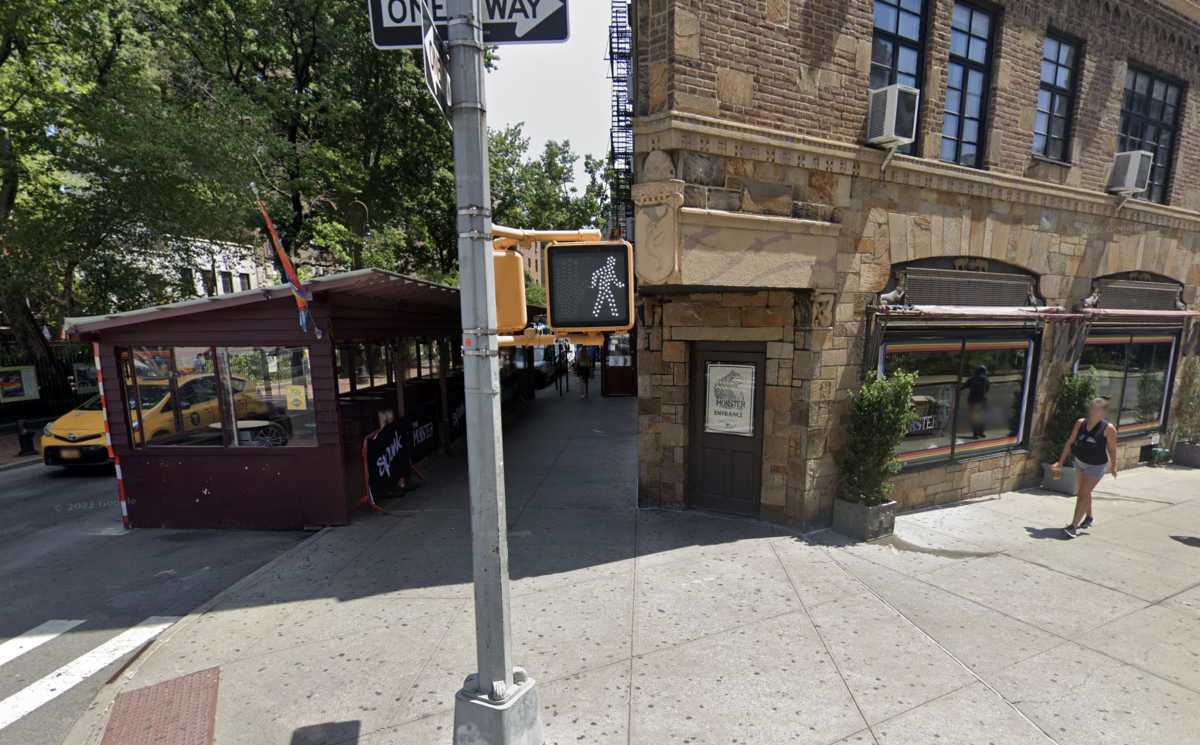-
 Chikarashi
Chikarashi227 Canal St.
A contender in the poke (Hawaiian raw fish salad) craze, with options incuding tuna, fluke and Scottish salmon.
Bossanova Ramen
76 Mott St.
The New York outpost of a popular Tokyo ramen restaurant.
Nom Wah Tea Parlor
13 Doyers St.
Second-generation owner Wilson Tang overhauled this 96-year-old Chinatown institution into a trendy, tasty dim sum spot.
” data-id=”112412835″ data-link=”https://amnewyork.wpengine.com/wp-content/uploads/2019/10/25693_image.jpg” class=”wp-image-1.12412835″/>Photo Credit: Linda Rosier -
 Apotheke
Apotheke9 Doyers St.
Apothecary-style cocktails are the specialty in this hidden lounge.
169 Bar
169 E. Broadway
Formally the Bloody Bucket, this neighborhood mainstay has been serving eclectic crowds since 1916.
Mr. Fong’s
40 Market St.
An unlikely location for one of New York’s most popular hangouts for the fashion industry.
646-964-4540
” data-id=”112412831″ data-link=”https://amnewyork.wpengine.com/wp-content/uploads/2019/10/25694_image.jpg” class=”wp-image-1.12412831″/>Photo Credit: Linda Rosier -
 Ping’s Dried Beef
Ping’s Dried Beef
58 Mulberry St.
In a neighborhood where you can find many places to satisfy your dried meat cravings, this is a local favorite.
212-732-0850
Yunhong Chopsticks
50 Mott St.
The U.S. location of a Beijing company, offering more than 200 styles of chopsticks.
212-566-8828
Lin Sister Herb Shop
4 Bowery
Cure what ails you at this traditional Chinese medicine shop.
” data-id=”112412829″ data-link=”https://amnewyork.wpengine.com/wp-content/uploads/2019/10/25886_image.jpg” class=”wp-image-1.12412829″/>Photo Credit: Linda Rosier -
 Columbus Park
Columbus ParkBayard to Worth streets between Baxter and Mulberry streets
A vital spot for Chinatown residents that is filled daily with musicians playing traditional Chinese music, seniors playing poker, and visitors who want to see a slice of Chinatown life.
Mahayana Buddhist Temple
133 Canal St.
This place of worship housing a 16-foot statue of Buddha, the largest in New York City.
Museum of Chinese in America
215 Centre St.
A must-see for visitors looking to learn about the history of Chinese immigrants in the United States.
” data-id=”112412827″ data-link=”https://amnewyork.wpengine.com/wp-content/uploads/2019/10/25887_image.jpg” class=”wp-image-1.12412827″/>Photo Credit: Linda Rosier -
 Trains:
Trains:6, J, Z to Canal Street
F to East Broadway
Buses:
M22, M15, M103
” data-id=”112412832″ data-link=”https://amnewyork.wpengine.com/wp-content/uploads/2019/10/14209_image.jpg” class=”wp-image-1.12412832″/>Photo Credit: Linda Rosier -
 Median sales price: $700,000
Median sales price: $700,000
Number of units on market: 22
Median rental price: $2,600
Number of rentals on market: 731
(Source: StreetEasy)
” data-id=”112412830″ data-link=”https://amnewyork.wpengine.com/wp-content/uploads/2019/10/14211_image.jpg” class=”wp-image-1.12412830″/>
Photo Credit: Linda Rosier -
 An 850-foot-tall luxury apartment tower currently under construction on the southern edge of Chinatown is causing concern among longtime residents of the neighborhood.
An 850-foot-tall luxury apartment tower currently under construction on the southern edge of Chinatown is causing concern among longtime residents of the neighborhood.One Manhattan Square, a planned 72-story, 815-unit skyscraper, is going up on the former site of a Pathmark supermarket, which closed in late 2012. Extell Development purchased the land in 2013 for $175 million, and construction on the building reached 14-stories as of press time.
But some locals say they are fearful that the project will spark a wave of new developments in the area, and that real estate prices in older buildings will rise as a result. Meanwhile, the construction is causing noise disruptions in an otherwise quiet neighborhood, others attest.
“My walls shake,” said Myrna Natal, 50, a 13-year resident of the Rutgers Houses, which are located across the street from the construction site. “It’s all day, even on the weekends. I have to go outside, but then I hear it even louder.”
The Coalition to Protect Chinatown and LES, a coalition of community groups, is one of many voices speaking out against the project.
“Extell builds skyscrapers and luxury developments for the world’s richest people,” said David Tieu, 29, a coalition member. “Not only did this project [replace] the only supermarket that served the people in the public housing in the neighborhood, it’s going to displace a lot of people due to the skyrocketing real estate values that will follow.”
Extell could not be reached for comment.
” data-id=”112412826″ data-link=”https://amnewyork.wpengine.com/wp-content/uploads/2019/10/14213_image.jpg” class=”wp-image-1.12412826″/>Photo Credit: Linda Rosier
Chinatown is changing.
Its narrow, densely packed streets still are teeming with a unique blend of storefronts filled with exotic produce, herbs and other goods, and it continues to be a vibrant immigrant community – but also present is a new generation of Chinese-Americans and other young hipsters who are shaping what the neighborhood will look like in the future.
Due to its proximity to fashionable areas like SoHo, the Lower East Side, and the Financial District, this traditionally Chinese community is gaining traction as a trendy destination for young professionals and students.
Chinatown, in other words, is becoming more than a magnet for adventurous foodies and tourists.
“It’s very important to have this younger generation come back from the suburbs and move to the community,” said Gigi Li, 35, who chaired the local Community Board 3 from 2012 until July this year.
Li grew up in Long Island but 10 years ago moved into what was formerly her aunt and uncle’s apartment in Chinatown.
“I always knew that if I had the opportunity to live here, I would,” she said.
Wilson Tang, 37, took over as owner of the 96-year-old Nom Wah Tea Parlor at 13 Doyers St. in 2010, which was previously owned by his uncle. He made changes that he said are drawing a much younger clientele, including switching to dim sum from a decades-long tradition of having no menu.
“People are looking for something different in Chinatown now,” he said. “Although I have a foot in both worlds — my father’s generation and the old Chinatown, and my younger generation — I embrace the change. Chinatown needs to evolve to survive.”
It is also an increasingly attractive location for those who want to live in Manhattan but are priced out of other neighborhoods.
“You used to see young people coming into Chinatown to eat and then drink, but they left afterwards,” said Helen Zhang, 27, a publicist who moved into a studio on Pell Street two years ago. “Now those crowds have more people who actually live here. You can tell more people from outside the neighborhood are moving into the neighborhood.”
For those looking to live in Chinatown, much of the available housing stock consists of pre-war walkups concentrated around Mott, Bayard, Pell and Baxter streets.
However, it does also have a handful of newer developments.
At Hester Gardens, a seven-story, 71-unit condo at 158 Hester St. that was completed in 2004, the average sales price is $1,467,027, according to the real estate listings website StreetEasy.
The average sale price at 123 Baxter St., a 23-unit condo built in 2003, is $2,349,886 on the site.
Other structures have been renovated and repurposed, like the Jewish Daily Forward Building at 175 E. Broadway, which was built in 1912 to for the newspaper and was renovated into 30 luxury condos in 2006.
The 11 luxury condos at 136 Baxter St. are in a former machinery warehouse built in 1915.
According to StreetEasy, the median sales price in Chinatown in 2015 was $700,000, up from $574,500 in 2014. The median sales price in all of Manhattan was $910,000 last year, the site found.
However, Chinatown’s rental market is more active than its sales market, as StreetEasy logged just 22 sales listed in the area in 2015, while there were 731 units available for rent.
The median rent in Chinatown last year was $2,600, compared to $3,125 in Manhattan as a whole.
A slew of new, stylish bars and restaurants are capitalizing on Chinatown’s rising popularity.
Apotheke opened in 2008 at 9 Doyers St., a windy, cobblestone side-street, and features apothecary-style cocktails. More recently, Kiki’s opened at 130 Division St. in 2015 and specializes in Greek food.
“The neighborhood is definitely being discovered,” observed Natalia Padilla, a real estate sales broker with Citi Habitats. “People are always looking for the next‘it’ neighborhood and I think Chinatown is just that place.”
Find it:
Chinatown is bound to the north by Hester Street to the west of Essex Street and East Broadway to the east of it and to the south by South Street and the FDR Drive. Its eastern boundary is Montgomery Street, and its western border runs jagged, south to north, from Pearl Street to Worth Street, up Baxter Street, down White Street and up Lafayette Street to Hester.





































